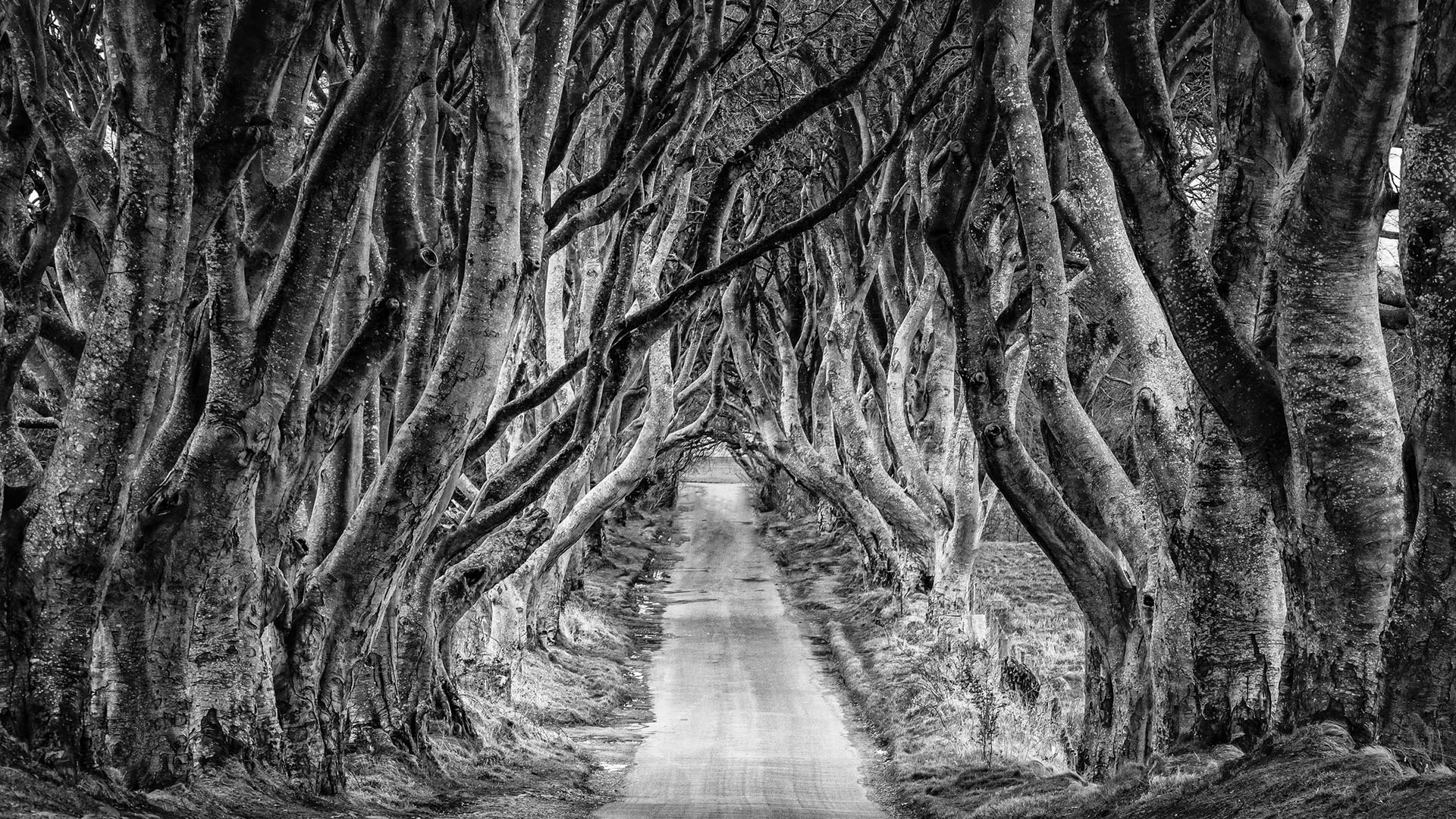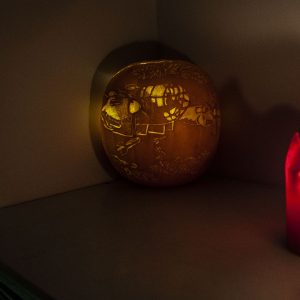Millions of people across the world celebrate Halloween in some shape or form. The holiday is particularly popular in America and conjures up images of ghosts, ghouls, trick, and treats. During the Second World War in Northern Ireland, soldiers in the United States Army were well known for their access to candies, chocolate, and sugar. Children across the world still associate Halloween with obtaining such treats but it was a different world in wartime.
During the Second World War, sugar was one of the food items rationed in many countries. As a result, the tradition of trick or treating waned but made a comeback in the 1950s. Some were lucky enough to still receive sweet treats. This included the U.S. Army who found Tootsie Rolls added to their packs due to their durability.
A Halloween party in 1942
The excerpt below provides a wonderful example of how Halloween was celebrated in America during the Second World War.
Write your Hallowe’en invitations on cutouts of black cats, cauldrons, scarecrows, pumpkins or witches. Use black or orange paper and write the invitation in the form of a jingle or just a note. Room decorations are a simple matter for they can be as casual as you like. Spread a few sheaves of corn around the room or stand up some stalks of corn amid a profusion of gay autumn leaves.
Orange or black candles or orange bulbs–just a few to create an eerie effect–can be used to provide the light. Large cutouts of black cats, witches, or pumpkins pinned to the walls around the room, brilliant orange, yellow, or red tablecloths of cotton or old sheets dyed in any of those colors enhance them for the party. Playing games that originate from the character of the occasion, like pulling fortunes form the witches’ cauldron or spirit rapping, are times of interest for this type of party.
And don’t forget that traditional cider and doughnuts, orange and black candies, ice cream molds with a pumpkin, or made-with-honey pumpkin pie contribute much in a decorative way.
Wartime Entertaining, Ethel X. Pator [Consolidated Book Publishers:Chicago] 1942 (p. 49)
Halloween in the trenches
Of course, millions of servicemen were not spending Halloween with their families through wartime. American GIs like Topeka’s Edward “Smitty” Smith were embroiled in bloody battle on 31st October 1944. He suffered 2 injuries on 31st October 1944 in Marieulles, France.
Smith had found himself arriving in France in October 1944 where than 2,000 American troops had died on the shores of Normandy months earlier. Smith’s main role was driving trucks. He supplied ammunition, gasoline, and equipment across France to frontline troops.
Members of the 95th Division were to relieve troops on the front lines. Smith and two others went ahead of 1st Platoon, Company E, 378th Infantry. He noticed what he thought were cobwebs in the trees but were, in fact, booby traps.
At this point, you displayed great and courageous initiative by rushing forward and pointing out booby traps to enable members of your squad to proceed safely. Reaching the edge of a clearing you dashed into the clearing and emptied your rifle point-blank into the nearest enemy foxhole. You then ran behind a large tree, reloaded and repeated this action on a second enemy foxhole.
You returned and for the third time rushed an enemy position, throwing grenades in the foxholes. All this action was done under heavy enemy small arm and machine-gun fire and returning from your third gallant raid you were seriously wounded in the left arm by enemy rifle fire. You then jumped into a foxhole for cover, setting off a booby trap, which wounded you the second time (in the left leg). But even after this second wound, it was only at your squad leader’s order that you went to the rear.
Major General Harry Twaddle – Commanding General of 95th Division.
After his Halloween adventures, Smith received a Purple Heart, Combat Medal, Victory Medal, and European Campaign Medal.
Halloween in Ulster
The Belfast Telegraph published the following article on Halloween celebrations on 31st October 1940.
Halloween will be celebrated in the traditional manner this evening with parties, dances, and other forms of entertainment notwithstanding the changes and difficulties brought by the war,
From the kiddies’ point of view, however, the evening will lack that sparkle and excitement, which fireworks and bonfires give to the scene and which, of course, are things of the past in these days of the blackout.
…
The scarcity of sugar will have its effect on the baking of cakes, but judging by the demand for threepenyy bits this morning, the old fashioned apple tart will still have its fascination for youthful “treasure hunters”.
Birth of a modern Halloween
Towards the end of the Second World War, parties at home increased in popularity with some of today’s more familiar games such as ducking for apples. One popular game had blindfolded girls reach into a bowl to draw out a coloured cloth. Red might mean she would marry a soldier, blue, perhaps a sailor.
Costumes rose in popularity too. Clowns, Cowboys and Indians, and hobos were common. The release of the Wizard of Oz in 1939 also led to the stereotypical witches costume appearing. Pointed hats, long noses, warts and evil cackles were how evil old hags would be portrayed from that day forward. Around this time, Hollywood embraced the paranormal more. ‘The Uninvited’ in 1944, starring Ray Milland was the first blockbuster to focus on ghosts and started the genre we recognise today.
Eventually, parties grew in size, celebration parades returned to the streets. Importantly, sugar rationing ended and America once again embraced its love of candy treats. It was OK to treat horror as fun again and the tradition of Halloween would grow and grow through the decades.





